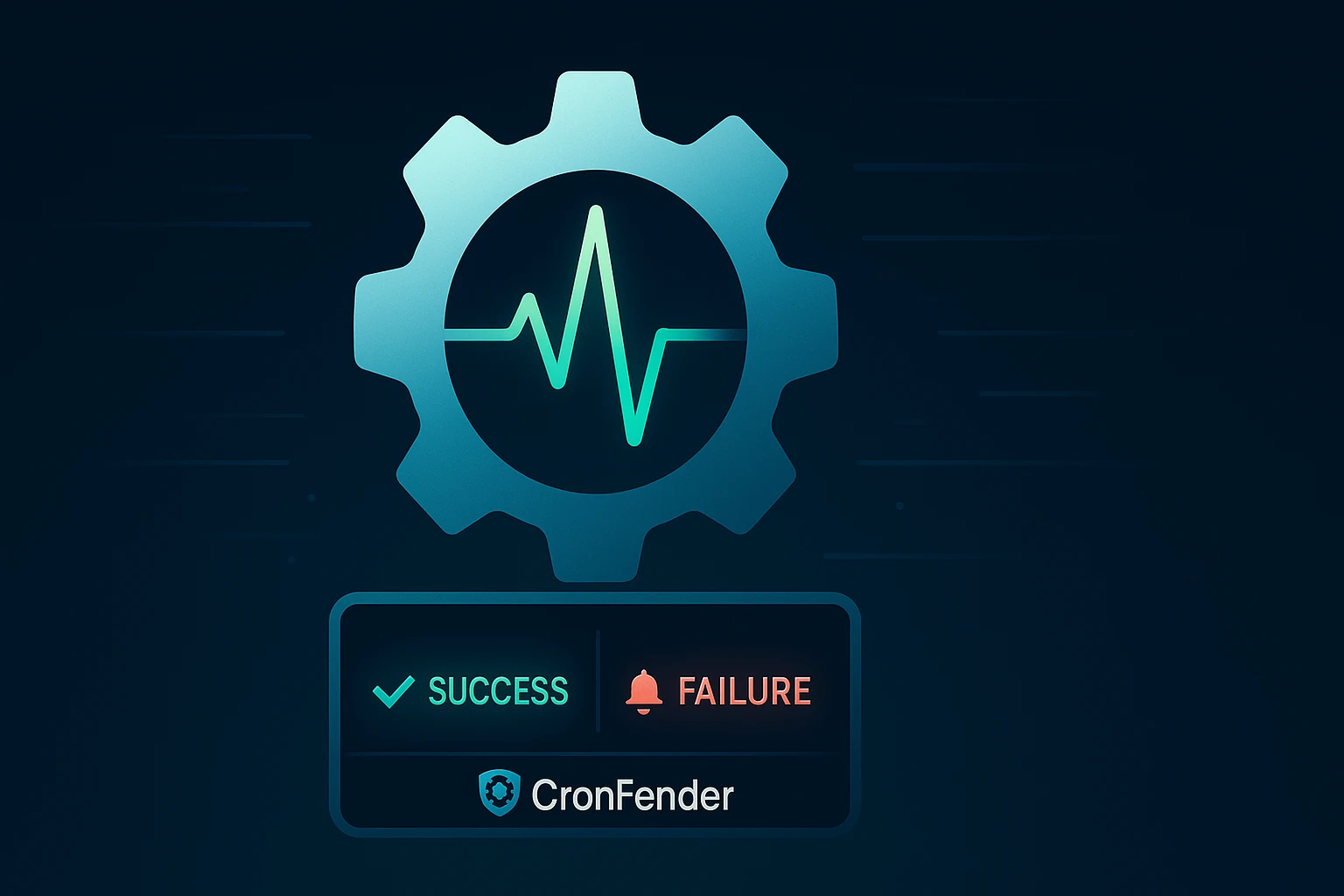You’ve set up a critical cron job—perhaps a daily database backup, an hourly report generation, or a weekly data sync. It runs for months without a hitch, giving you a sense of security. But what happens when it quietly fails?
This is the nightmare of the "silent failure." Your cron job simply stops running, and you remain blissfully unaware until a critical issue arises. The backups are no longer being created, the reports are out of date, and your data is inconsistent.
This is a problem that traditional cron was never built to solve. It tells you when a job runs, but it doesn't tell you when it doesn't.
The good news? There's a simple, proactive solution: the "heartbeat" cron job, and CronFender makes it easy to set up.
The Heartbeat Principle
A heartbeat is a simple monitoring technique where a scheduled task sends a signal—a "ping"—to an external monitoring service. The service expects this signal at a specific interval. If the signal is ever missed, the service knows something is wrong and immediately alerts you.
Think of it like a remote check-in. Instead of waiting for a job to fail, you are proactively confirming that it succeeded and ran on time.
Here's a step-by-step guide on how to set this up using CronFender.
Step 1: Create a Simple Heartbeat Endpoint
First, you need a simple URL endpoint on your server that your cron job can "ping." This endpoint should be a lightweight function that simply returns an HTTP status code 200 OK. It doesn't need to do any heavy lifting; its sole purpose is to acknowledge that the task has run successfully.
A good practice is to create a unique URL for each critical cron job. For example: https://your-api.com/heartbeat/daily-backup.
Step 2: Schedule the Heartbeat in CronFender
Now, let's configure CronFender to monitor this heartbeat.
- Log in to CronFender and create a new job.
- URL: Enter the unique heartbeat URL you created in Step 1 (e.g.,
https://your-api.com/heartbeat/daily-backup). - Method: Choose
GET. - Schedule: Set the cron schedule for when you expect your job to complete. For a daily backup that runs at 2:00 AM, you might schedule this heartbeat to run at 2:15 AM to give the backup time to finish.
CronFender will now start making a request to this URL on your schedule.
Step 3: Configure Alert Rules
This is where the magic happens. We need to tell CronFender what to do if the heartbeat is ever missed.
- Failure Alert: By default, CronFender will create a
Failurealert if your heartbeat URL returns a non-200 HTTP status code (e.g., a 404 or 500 error). This is your first line of defense, telling you that your endpoint is down or broken.
Step 4: Set Up Notifications
Now that your monitoring is in place, you need to make sure the right people are notified when something goes wrong. CronFender integrates with popular notification services.
- Choose a Channel: Link your CronFender account to your preferred notification channel, such as:
- Email: For direct alerts to team members.
- Slack: For a public channel where your team can collaborate on a fix.
Now, if your backup script fails to complete, or if your server goes down and the script never even starts, CronFender will send an immediate alert, giving you peace of mind and the opportunity to fix the problem before it escalates.
Conclusion
The "heartbeat" approach is a simple yet powerful way to solve the age-old problem of silent cron job failures. By offloading the monitoring and alerting to a reliable, external service like CronFender, you can focus on building your application, confident that your automation is running exactly as it should.
Don't let a silent failure become a critical problem. Start monitoring your cron jobs proactively today.
